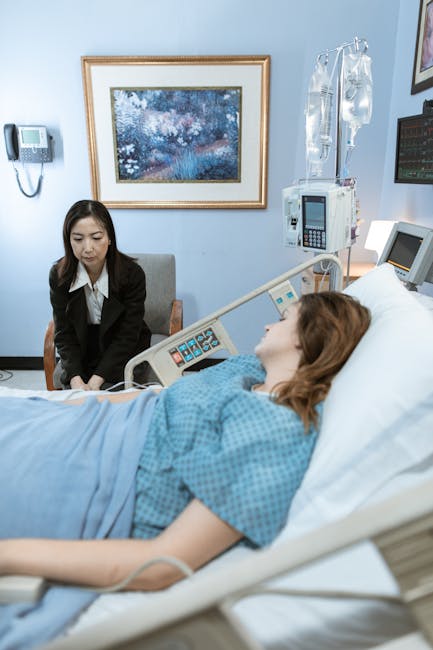
Of course. Here is a lengthy, well-structured, and eloquently written article on the benefits of Patient Assistance Programs (PAPs), as per your request.
The Lifeline of Compassion: Unraveling the Multifaceted Benefits of Patient Assistance Programs for Medicines
In the intricate and often daunting landscape of modern healthcare, where medical miracles walk hand-in-hand with staggering financial costs, a beacon of hope exists for millions: Patient Assistance Programs (PAPs). These programs, often unsung heroes in the narrative of public health, represent a critical junction where corporate responsibility, clinical need, and human compassion converge. Far more than a mere financial stopgap, PAPs are a comprehensive ecosystem of support that sustains health, empowers individuals, and strengthens the very fabric of societal well-being. The benefits they offer are profound, multifaceted, and extend far beyond the immediate act of providing a free or discounted bottle of medication.
The Paramount Benefit: Alleviating the Crushing Burden of Financial Toxicity
The most immediate and tangible benefit of PAPs is their role in mitigating the exorbitant cost of prescription medications, particularly specialty drugs for chronic, complex, or rare conditions like cancer, rheumatoid arthritis, multiple sclerosis, or HIV/AIDS. The term “financial toxicity” has entered the medical lexicon to describe the devastating secondary burden of treatment costs—a burden that can be as debilitating as the illness itself.
PAPs act as a shield against this toxicity. By providing eligible patients with their necessary medicines at no cost or a significantly reduced co-pay, these programs:
- Prevent Destructive Choices: They eliminate the impossible dilemma patients often face: choosing between filling a prescription and paying for rent, groceries, or their children’s education. No one should have to ration insulin or skip lifesaving cancer drugs due to cost, and PAPs ensure they don’t have to.
- Reduce Medical Debt: Medical expenses are a leading cause of bankruptcy in many countries. PAPs prevent families from plunging into insurmountable debt, preserving their financial stability and future.
- Enhance Access to Cutting-Edge Treatment: They bridge the gap between revolutionary pharmaceutical innovation and patient accessibility. Without PAPs, many breakthrough therapies would remain locked behind a financial barrier, available only to the wealthy. These programs democratize access to the best modern medicine has to offer.
The Clinical Cornerstone: Improving Health Outcomes and Adherence
The financial assistance provided by PAPs is not an end in itself; it is the crucial means to a far more important end: improved health. The link between medication affordability and adherence is unequivocal. When patients cannot afford their prescriptions, they skip doses, split pills, or abandon treatment regimens altogether—a phenomenon known as “non-adherence.”
PAPs directly combat this by ensuring a consistent, uninterrupted supply of medication. This leads to a cascade of positive clinical outcomes:
- Effective Disease Management: For chronic conditions like diabetes, hypertension, or asthma, consistent medication is the key to controlling the disease, preventing complications, and maintaining a good quality of life.
- Treatment Success: In areas like oncology or virology (e.g., HIV), adherence is critical for the treatment’s efficacy. Incomplete regimens can lead to treatment failure and the development of drug-resistant strains of disease.
- Reduced Complications and Hospitalizations: When diseases are properly managed through consistent medication, the risk of acute episodes, emergencies, and hospital admissions plummets. This not only benefits the patient by avoiding trauma and suffering but also reduces the overall burden on the healthcare system.
The Psychological Sanctuary: Mitigating Anxiety and Fostering Hope
The psychological impact of a serious diagnosis is heavy enough without the added terror of financial ruin. The constant worry about how to afford treatment breeds anxiety, stress, and a feeling of helplessness that can negatively impact the immune system and hinder recovery.
PAPs provide a profound psychological benefit by replacing this anxiety with a sense of security and hope. Knowing that their medication is covered allows patients and their families to:
- Focus on Healing: They can redirect their mental and emotional energy away from financial spreadsheets and towards getting better, following their doctor’s advice, and spending quality time with loved ones.
- Regain a Sense of Control: A diagnosis can make life feel chaotic and out of control. Successfully enrolling in a PAP is an empowering action that helps patients reclaim agency over their health journey.
- Reduce Stigma: For individuals who feel shame or embarrassment about being unable to afford their care, PAPs offer a dignified, legitimate pathway to receive help, framed within a structured program rather than charity.
The Societal Symbiosis: Strengthening the Public Health Ecosystem
The benefits of PAPs ripple outward, creating a positive impact on the broader community and the healthcare system as a whole.
- Public Health Advancement: By facilitating treatment for infectious diseases, PAPs contribute to “herd immunity” and lower transmission rates, protecting the entire community.
- Economic Productivity: Healthy individuals can remain in the workforce, contribute to the economy, and care for their families. Keeping a parent on effective medication for a chronic condition means they can continue to work and support their household.
- Cost Savings for the System: As mentioned, better adherence leads to fewer expensive emergency room visits and hospitalizations. This translates into significant savings for insurance companies, government healthcare programs, and the system at large, freeing up resources for other needs.
- Fulfilling Ethical and Moral Imperatives: For pharmaceutical companies, PAPs are a tangible expression of their commitment to patient welfare beyond profit. They represent an investment in the communities they serve and fulfill a core ethical obligation to ensure their life-changing discoveries can actually reach lives in need.
The Navigational Compass: The Role of Support and Guidance
It is important to acknowledge that the world of PAPs can be complex to navigate, with varying eligibility criteria, applications, and paperwork. This is where the invaluable role of healthcare providers, hospital social workers, and dedicated non-profit organizations comes into play. These professionals act as guides, helping patients find appropriate programs, complete applications, and secure the help they need. Their assistance ensures that this critical lifeline is accessible to all, regardless of their level of health literacy or bureaucratic savvy.
Conclusion: More Than Medicine
In essence, Patient Assistance Programs are a testament to the idea that health is a fundamental human right, not a privilege reserved for the affluent. They are a sophisticated and necessary response to the economic realities of modern drug development. The benefits they provide—financial relief, clinical improvement, psychological peace, and societal strength—are interwoven into a powerful lifeline.
They do not simply provide pills; they provide possibility. They provide a patient with the chance to watch their children grow up, a grandparent the opportunity to enjoy their retirement in good health, and an individual the freedom to pursue their dreams unencumbered by disease and debt. In the final analysis, Patient Assistance Programs are a profound expression of compassion in action, ensuring that the march of medical progress benefits all of humanity, one patient at a time.






